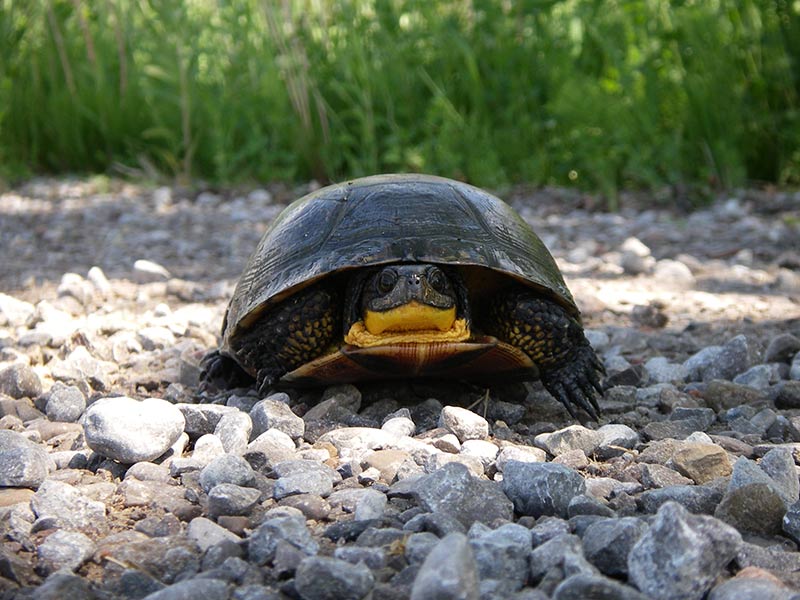
SCIENTIFIC NAME
Emydoidea blandingii
DESCRIPTION
The Blanding’s Turtle has a highly domed, upper shell with light-coloured flecks. The chin and neck are bright yellow.
RANGE
Southern Ontario, southern Québec and part of Nova Scotia
HABITAT
Blanding’s Turtles live in nutrient rich lakes, marshes and swamps with abundant aquatic vegetation. Individuals can make use of multiple wetlands within a year, meaning that turtles will frequently move overland between wetlands. Females nest in open areas that are often more than 100 metres from wetlands. In winter, Blanding’s Turtles hibernate under water on the bottom of wetlands.
DIET
BEHAVIOUR
undefinedPRIMARY ECOSYSTEM ROLES
- 0







